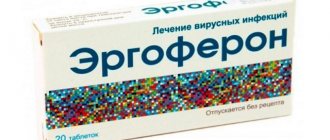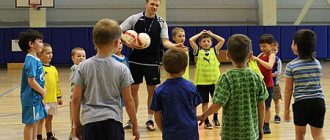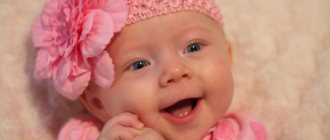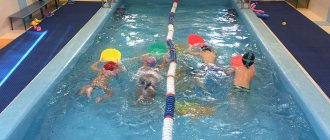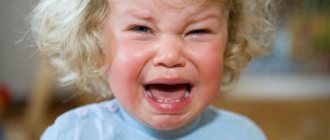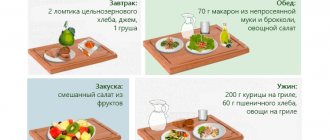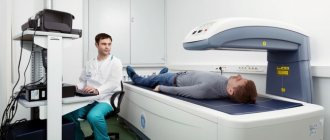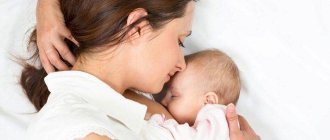If an adult or child in the family gets sick, and the pathology affects the respiratory tract, you should not immediately rush to get medicine. These products are not safe. It is better to treat the first symptoms of a cold with inhalations. These procedures will shorten the healing time, relieve discomfort, and eliminate inflammatory processes. Inhalers are often safer and more effective than using other methods to treat colds. Why is it more effective?
Inhalation procedure
Inhalations are a more gentle method of healing compared to others. There are no age restrictions or contraindications, except for the drugs used in this case.
When the first symptoms of pathology appear, as well as the elimination of residual signs of the disease, a nebulizer may become the only method of treatment. Inhalations are sometimes indispensable in complex therapy.
Choosing a nebulizer for a baby
The purchase of a nebulizer should be discussed with your pediatrician.
To combat a simple cold, a compression nebulizer will be sufficient; there is no point in purchasing an inhaler. The following rules can be distinguished:
- try not to use a nebulizer for newborns; it is suitable for older children;
- If you have chronic diseases, ultrasound equipment is suitable;
- If your child reacts sharply to loud sounds, buy devices that operate quietly. The accompanying documentation indicates the level of noise emitted.
The best models for newborns
Inhalation for an infant should be carried out using high-quality equipment. Knowing their varieties will help you choose the right model:
- steam (they only warm the upper respiratory tract; not all medications can be used);
- compressor (large list of available drugs, versatility);
- ultrasonic (suitable for any situation, characterized by silent operation).
The equipment is used not only for medicines; sometimes you can simply breathe mineral water. This is enough to warm up the respiratory tract. Medicines are required only when the disease is accompanied by severe coughing and complications.
When should nebulizers be used?
Like any physiotherapeutic device, inhalers of any type have their contraindications. If a child or adult has a serious medical condition, nebulizing the drug may worsen the problem and cause severe side effects.
People with the following pathologies and diseases are prohibited from using a nebulizer:
- Hypertension, increased pressure of the 3rd degree
- Presence of large cavities in the lungs
- Respiratory failure stage 3
- Intolerance to drugs used for inhalation
- Bleeding from the nose, lungs
- The period after stroke and heart attack
- Arrhythmia, cardiac dysfunction
- Spontaneous pneumothorax
- Increased body temperature
- Circulatory disorders in the brain
Before choosing a nebulizer for children, you should consult a pediatrician to prevent complications caused by the inhalation procedure. If the child has contraindications, the specialist will be able to recommend another effective method of treating respiratory diseases.
Indications and contraindications
Inhalation administration of medications is recommended for children with a runny nose and cough caused by the following diseases:
- Fungal infection of the respiratory tract;
- Cystic fibrosis;
- Bronchial asthma;
- Tuberculosis;
- ARVI;
- The rehabilitation period after suffering from pneumonia;
- Chronic or acute form of bronchitis;
- Other variants of inflammatory-catarrhal lesions of the upper respiratory tract.
Along with the list of indications mentioned, there is a list of conditions in which the use of any type of household children's inhalers is unacceptable. These conditions include:
- Fever and increased body temperature above 37 degrees;
- Bacterial sore throat;
- Otitis;
- Individual intolerance to the medicinal solution used;
- The appearance of particles of pus or blood in the sputum;
- Impaired blood clotting ability in a child;
- Severe diseases of the respiratory and cardiovascular systems.
In addition, the use of any type of inhaler is contraindicated in children under 1 year of age.
What medications can be used for inhalation with nebulizers?
There is a whole list of drugs that are suitable for inhalation therapy of the respiratory tract. For example, several liquids are used to dilute the medicine:
- Saline solution
- Mineral water (Essentuki, Borjomi, etc.)
Physiotherapeutic solution can be administered in its pure form, as it is sold in a pharmacy. And mineral water is first freed from gas bubbles and slightly heated.
Nebulizer recipes for children may contain the following groups of drugs:
- Antiseptics (Furacilin, Dioxidin)
- Antibacterial drugs in ampoules (Fluimucil, Tobramycin, etc.)
- Painkillers (Lidocaine)
- Bronchodilator solutions (Berotec, Salbutamol, Fenoterol)
- Immunomodulators (Interferon dry)
- Hormonal components (Cromohexal, Pulmicort)
- Expectorants (Ambroxol, Lazolvan, Acetylcysteine)
- Combination drugs (Berodual, Fenoterol)
- Herbal medicines (Rotokan)
Nebulizer prescriptions for children should be prescribed by their attending physician. You cannot independently select medications that seem effective, because it is necessary to pay attention to the individual characteristics of the child’s body and indications for the use of drugs.
The above remedies are sufficient to use inhalation therapy to combat inflammation or allergic reactions of the respiratory tract in a child.
Compressor inhaler: how to use the device?
Compressor inhaler, how to use the device? It is large in size and creates a lot of noise during operation. These are the main disadvantages of the device. A compressor inhaler creates an aerosol cloud using compressed air, which enters the chamber under pressure.
In this case, the solution does not heat up, so the use of any medicinal liquids is effective. Many types of compression inhalers have a function for switching the dispersion mode. This allows you to direct medications to the desired part of the respiratory tract. The aerosol can be supplied in one of three ways:
- Dosimetric devices react using electrical sensors to the respiratory rhythm. This allows you to use medicinal solutions more effectively.
- Devices that are activated by inhalation. At this moment, the aerosol penetrates into the body.
- Once-through devices operate at a constant speed, maintaining a vapor cloud.
For proper treatment, it is necessary to follow the operating techniques for a specific device, described in the instructions. For deeper penetration of the aerosol, special attachments are placed on the device. Before using the inhaler for the first time, you need to do a short training in proper breathing without the device. When you cough, you need to inhale the aerosol through your nose and exhale through your mouth; when you have a runny nose, vice versa.
Before using the inhaler, a medicinal solution is poured into it. For children, the duration of the procedure varies from 3 to 10 minutes, for adults – from 15 to 20 minutes. The frequency of use of the inhaler is determined by the doctor. One hour before the procedure and 60 minutes after it, you should not smoke or drink alcohol.
Nebulizer for children: instructions for use
First of all, parents who bought an inhaler for children should study the rules for its use. Thus, they will be able to prevent premature failure of an expensive device, and also not reduce the effectiveness of the treatment procedure. The technique for using a particular type of nebulizer may differ significantly, but general recommendations will help you understand how all inhalers work.
Each nebulizer has a special container into which you need to pour the medicinal solution. Typically, drugs are diluted 1:1 with saline. For a single inhalation procedure, a child will need from 3 to 6 ml of liquid.
It is important to remember that it is prohibited to dissolve drugs with ordinary boiled or distilled water. The only diluent is saline solution 0.9%. In addition, you cannot take tablets and crush them into powder, because only specially prepared pharmaceutical solutions are poured into nebulizers.
After this, the container is closed and a mouthpiece or baby mask is attached to the inhaler. Then turn on the nebulizer and carry out therapy for 5 to 20 minutes. Typically, the inhalation procedure continues until the medicinal liquid is almost gone and fog stops forming. It’s okay if a small amount of solution remains in the container.
While the nebulizer is operating, the child should sit quietly and take shallow breaths. If children try to inhale the sprayed medicine forcefully, this can cause coughing attacks, as well as serious irritation of the lining of the respiratory system.
After the procedure, the inhaler is turned off and all tubes and nozzles are disconnected. Those parts that came into contact with the drug and the child’s respiratory tract are cleaned. To do this, it is enough to rinse the elements with hot running water (but not boiling water, because the tubes and masks can melt from the high temperature). It is recommended to use a disinfectant or detergent for cleaning. Then they are rinsed with clean water and dried (you can take a hairdryer).
Conditions for therapy for rhinitis
- It is necessary to perform inhalations with a runny nose in compliance with certain rules:
the interval between therapy and food intake should be 30 minutes; after inhalation, do not walk for 30 minutes; the session must be conducted silently; can be treated only at normal temperature; the procedure is performed while sitting; you should inhale through your nose, exhale through your mouth; session duration 10-15 minutes; after inhalation with hormones or antibiotics, the mouth should be rinsed with water; To get rid of a runny nose, 5-10 procedures are required.
Features of working with the device
The table below shows the dependence of the location where the drug settles on the size of its particles.
| Particle diameter, µm | Where do they accumulate? |
| More than 10 | Nasopharynx |
| 5-10 | Throat, trachea, larynx |
| 2-5 | Lower respiratory sections |
| 0,5-2 | Alveoli |
The table shows that for the treatment of rhinitis, a nebulizer with larger particles of the substance is needed, and for coughing - with smaller ones.
So, inhalation is an effective method of treating a runny nose and cough. The doctor must select the correct medications for their implementation, depending on the patient’s diagnosis. He will prescribe the number of sessions and dosage of the medication.
Operating principle of the inhaler
The water vapor that is inhaled by the child by inhalation is evenly distributed over the entire surface of the mucous membrane of the upper respiratory tract. Against the background of this process, blood vessels dilate, blood flow to inflamed areas increases, metabolic processes are activated and the process of regeneration of damaged areas of the mucosa is accelerated. The use of this device in the treatment of cough is accompanied by the following list of positive effects:
- Cleansing the respiratory tract from viral and bacterial pathogens, as well as from non-viable leukocytes;
- Liquefaction of sputum and stimulation of its removal from the lumen of the bronchi;
- Combating dry cough by stimulating the production of emollient secretions.
If a child suffers from difficulty breathing through the nose, then using a household inhaler will be accompanied by the following positive effects:
- Reducing the intensity of swelling of the mucous membrane of the upper respiratory tract;
- Reducing the risk of a runny nose turning into sinusitis and other purulent-inflammatory diseases of the nasal sinuses;
- Acceleration of the synthesis of liquid that has a bactericidal effect on pathogens;
- Increasing local immunity and dilating small blood vessels.
How to use
Let's consider inhalation using the example of a compression nebulizer:
- the device is connected to the network;
- The medicine and saline solution in the required dosage are poured into a special container, and the container is closed with a lid. Usually the solution for inhalation and the medicine itself are mixed in equal proportions;
- a clean, sterilized mask is placed over the baby’s mouth and nose, secured with special rubber and a clamp around the baby’s head;
- the device turns on, if necessary, additional parameters are adjusted (particle sizes, inhalation-exhalation control, etc.);
- As soon as the solution in the container runs out, the device is turned off, the mask is removed, sterilized and stored.
However, before use, be sure to read the operating instructions for your particular nebulizer model and read the instructions for using the medicine prescribed to you by your doctor.
We must not forget that drugs must be used only in the form intended for inhalation, usually this is a liquid solution with a certain concentration of the active substance. Under no circumstances should tablet forms, syrups or liquid medicines undiluted with saline be used!
Inhaler and nebulizer: what is it?
Steam inhalers are familiar to many patients - they can be found in hospitals and health resorts. Heated steam from the device enters the respiratory tract at the moment of inhalation. You can use a simplified method of steam therapy at home by using an ordinary saucepan as a container and choosing a filler - herbal decoction, potatoes, etc.
This is an accessible and at the same time least expensive method, but the area of exposure to steam is limited to the upper respiratory tract. There is also a risk of burns if the steam is too hot.
The concentration of the substance that the patient inhales is small, it is difficult to dose, so the effectiveness of steam inhalation depends on many factors - the leading among them is the localization of the pathological focus.
So, an inhaler can help if you need a remedy for a runny nose, but if the lower respiratory tract is affected, it is useless. Steam inhalations should not be performed on a child under 1 year of age.
A nebulizer is a device for converting liquid into an aerosol, equipped with a face mask and mouthpiece. This is a progressive model, created on the basis of a simple inhaler and equipped with a reflective damper, which is used to eliminate particularly large particles unsuitable for high-quality inhalation.
When mentioning compact inhalers for home use, it means a nebulizer. There are these types:
- Compressor, or jet. To create a cloud of small particles, a directed air flow is used. The air stream breaks down the inhaled agent. The advantage is the ability to use a wide range of medications. There are several types of device. Direct-flow nebulizers create an aerosol in a continuous mode, breath-controlled nebulizers deliver medicine when the patient takes a breath, and dosimetric nebulizers capture the breathing rhythm using electronic sensors and activate the release of the aerosol at the moment of inhalation according to the patient’s needs. It should be taken into account that the operation of a compressor nebulizer is accompanied by noise. The average particle size is 5 microns.
- Ultrasonic. Aerosol formation occurs under the influence of ultrasonic vibrations. The aerosol is generated much faster than in a compressor device, and its particles are smaller (from 2 to 3 microns), which ensures their deposition in the small bronchi and bronchioles in sufficient concentration. The nebulizer works almost silently and is suitable for inhalations with liquid volumes above average (within 20–30 ml), and the procedure takes from 20 to 25 minutes. The use of corticosteroids (budesonide, fluticasone), antibacterial agents, and mucolytics is prohibited. The absence of active air flow does not eliminate bronchospasm, since a deep breath will be required for the medicine to penetrate the respiratory tract. An ultrasonic inhaler for coughs and runny noses for children and adults has a higher cost compared to the compressor version.
- Mesh nebulizer. It has a metal porous membrane for uniform spraying of the medicine. The device is small in size and equipped with a sealed chamber, which allows you to avoid the risk of the product spilling out. The patient has the opportunity to independently choose the mode - continuous or variable aerosol generation. The inhaler is used for runny noses in children and adults; it does not create noise. The aerosol contains particles measuring about 4.9 microns. A small amount of medication is required - the minimum allowable amount is 0.5 ml. Using a mesh nebulizer, you can perform inhalations with any medications, including antibiotics and steroids.
Medicines for inhalation with a nebulizer
Through a nebulizer, the medicine enters directly into the respiratory tract, bypassing the digestive tract and bloodstream.
Pharmacies sell ready-made medications for use in a nebulizer (nebulas). You can use saline solution (0.9% sodium chloride solution), alkaline mineral waters Narzan, Borjomi, Essentuki - previously degassed and heated to room temperature.
The following may only be used as prescribed by a pediatrician:
- antiseptics furatsilin, dioxidin;
- antibiotics Tobramycin, Gentamicin;
- anesthetic lidocaine;
- bronchodilators Berotek, Atroven, Salbutamol, Astalin, Salgim, Ventolin, Fenoterol, Salamol.
- hormones Budesonide, Pulmicort, Cromohexal;
- immunomodulator – dry leukocyte interferon;
- mucolytics Ambroxol, Acetylcysteine, Lazolvan, Fluimucil, Ambrohexal, hypertonic solution;
- herbal medicine Rotokan.
This list of drugs is sufficient for the treatment of respiratory diseases of an inflammatory and allergic nature in combination with other therapeutic purposes. But you cannot select them for treating children on your own!
There is also a list of drugs whose use in nebulizers is undesirable. This is due to the fact that not all of the inhaled drug remains in the respiratory tract. The mucous membrane in them is abundantly supplied with capillaries, which allows finely dispersed medicine to penetrate into the bloodstream.
For this reason, one should not strive for the smallest possible size of drug droplets in an aerosol: such microparticles will not linger on the bronchial mucosa, but, having reached the alveoli, will quickly penetrate into the blood, the local effect of the drug (the purpose of inhalation) will be minimal.
You should be very careful when using herbal infusions:
- firstly, at home it is difficult to filter them efficiently so as not to introduce debris into the alveoli and cause damage to the inhaler;
- secondly, herbs are among the strongest allergens and when used, instead of a therapeutic effect, you can get a very strong allergic reaction.
Despite the instructions in the instructions about the possibility of using essential oils in inhalations, you need to remember that these oils give a good effect in the treatment of the oropharynx and nasopharynx. Injected into the alveoli of the lungs, they cause the development of severe lipoid pneumonia.
Should not be used in any type of nebulizer:
- Eufillin;
- Papaverine;
- Diphenhydramine;
- Platyfillin;
- Dexazone;
- Prednisolone;
- Hydrocortisone.
This is due to the fact that these drugs do not have a local effect at all or the effect is insignificant.
Why are they effective?
The main positive effects of using inhalers for coughs and runny nose:
| With a runny nose | When coughing |
| Vasodilation and increased local immunity | Softening mucus and making it easier to expectorate |
| Increased mucus production and its antiseptic effect on pathogenic flora in the nasal cavity | Stimulates mucus production, which eliminates dry cough and prevents further spread of infection |
| Reduced swelling of the mucous membrane | Removing dead leukocytes and bacteria from the respiratory tract |
| Reducing the risk of complications |
By inhaling water vapor from a steam inhaler, the child will more effectively cope with respiratory diseases, since this will improve the production and separation of mucus, increase blood flow in the capillaries and activate metabolic processes in the mucous membranes.
The action of the nebulizer is also aimed at converting medications in liquid form into tiny particles that are evenly distributed throughout the child's respiratory tract. Depending on the size of these particles, inhalation will be a therapeutic procedure for different parts of the respiratory tract. Thanks to this type of inhaler, medications will quickly enter the respiratory system and will act more effectively and longer.
When are nebulizers used for children?
Inhalation procedures are always used in respiratory therapy. Modern nebulizers help cope with the following tasks:
- Relieve or stop bronchospasms
- Improve the removal of mucus from the respiratory tract
- Sanitize all organs of the respiratory system
- Relieve swelling of mucous tissues
- Eliminate the inflammatory process at the site of the disease
- Deliver medicinal solutions to remote areas of the respiratory tract
- Tonify local immunity
- Restore blood microcirculation in the membrane
- Protect the mucous membrane from the negative effects of allergens
Nebulizers are used not only in the treatment of respiratory diseases. They are used for prevention before epidemics of acute respiratory viral infections, influenza, and infectious inflammation in the respiratory system.
What types of nebulizers and inhalers are there?
- Ultrasonic nebulizers are compact, portable nebulizers that do not require saline solution mixed with medication. This nebulizer is charged using batteries. It also works faster than any sprayers and produces less noise compared to other types. It does not have a compressor, but uses ultrasonic waves to directly aerosolize the medication.
- Compressor nebulizers are cheaper and easier to use. This type of inhalation machine uses compressed air to produce a fine mist of medication. Typically, there is a plastic cup that contains liquid medicine, and air is forced through the tube by the operation of a compressor. Compressor-type nebulizers often require electricity to operate and are therefore not intended for travel. Older models of these sprayers are also large in size and usually produce quite a lot of noise.
- Mesh nebulizers are the fastest of all types of inhalers and are also more expensive. They use a vibrating membrane to produce a fine aerosol of liquid medicine. They also come in a portable and compact design that is ideal for travel. It is battery operated, but should be cleaned regularly to prevent the small holes through which the aerosol is released becoming clogged.
There are many different sprayers available so people can choose the one that best suits their needs. Parents and doctors can choose a nebulizer that is appropriate for patients based on the medication needed, cost, patient preference, and whether it will be used for travel or just inside the home. Nebulizers are the easiest way to administer liquid medications to patients, especially toddlers and infants.
How to breathe: the best solution recipes
| Composition of the solution | What does it help with? | Features of application |
| Purified mineral water, sodium chloride | For runny nose, wet cough, laryngitis, adenoids | The frequency of procedures is 2-4 times daily. Inhalation is carried out through a mask. |
| injection 1 ml Saline solution 1 ml | For “dry” cough | At 2-6 years of age, 1-2 ml of medication and the same amount of saline are used for one inhalation. 1-2 procedures are performed daily. Duration: up to 10 days. It is not recommended to combine it with antibiotic treatment. |
| or lazolvan 1 ml Saline solution 1 ml | For diseases of the respiratory system with difficult to separate viscous sputum | Up to the age of two, 1 ml of medication is used, for children over 2 years old - 2 ml per procedure. Inhalations are carried out no longer than 5 days. Do not combine with treatment with antitussive drugs. |
| 1 ml Saline solution 2 ml | For coughs with tracheitis and bronchitis, as well as whooping cough | Conducted for children under 10 years of age. |
| Interferon 3 ampoules Saline solution 30 ml | From a viral runny nose | Before the procedure, the solution is heated, but not more than +37°. Inhalations are carried out 2 times a day. |
| 1/4 bottle | For sore throats of a bacterial nature | The procedure is carried out twice a day. An open bottle of antibiotic is stored in the refrigerator for up to 24 hours. Before inhalation, the medicine should be warmed to room temperature. |
| Dekasan 2 ml Saline solution 4 ml | From laryngopharyngitis and tonsillitis of a bacterial nature, as well as from adenoids | The procedure is carried out 1-2 times a day for a maximum of 5 days. |
| 1 ml Saline solution 2 ml | For purulent forms of respiratory tract infections | Inhalations are carried out three times a day. |
| Tussamag 1 ml Saline solution 3 ml | For non-productive cough | Procedures are prescribed for children from 1 to 5 years old up to 3 times a day. |
| 1% alcohol solution of chlorophyllipt, diluted in saline solution 1:10 | For a runny nose caused by staphylococci | For one procedure, use 3 ml of the resulting solution. Inhalations should be carried out three times a day. |
| 10 drops (children under 6 years old) Saline solution 3 ml | For spasms in the respiratory system and asthma attacks | Inhalations are indicated up to 3 times daily. |
| nebula 1 ampoule | For attacks of bronchial asthma | Each ampoule of the drug is a ready-made solution of salbutamol for inhalation. The procedures are carried out three times a day. |
| Astalin 1 ampoule | For attacks of bronchial asthma | Each ampoule contains salbutamol mixed with saline solution, so it is a ready-made solution for inhalation. The dosage may vary depending on the severity of the attack - if the case is mild, it is permissible to use half an ampoule, and it can be diluted with saline solution. |
What is a nebulizer for?
Kartashova N.K.
Patient's Guide. You can learn about what a nebulizer is, what diseases can be treated with its help, how to carry out inhalation correctly, how to choose a nebulizer, and much more about the modern method of inhalation therapy from this article.
NEBULIZER THERAPY IS MODERN AND SAFE
In the treatment of respiratory diseases, the most effective and modern method is inhalation therapy. Inhalation of medications through a nebulizer is one of the most reliable and simplest treatment methods. The use of nebulizers in the treatment of respiratory diseases is gaining increasing recognition among doctors and patients.
To make the medicine easier to penetrate into the respiratory tract, it should be converted into an aerosol. A nebulizer is a chamber in which a medicinal solution is sprayed into an aerosol and delivered into the patient’s respiratory tract. The healing aerosol is created due to certain forces. Such forces can be air flow (compressor nebulizers) or ultrasonic vibrations of the membrane (ultrasonic nebulizers).
The modern approach to the treatment of respiratory diseases involves delivering drugs directly to the respiratory tract through the widespread use of inhaled forms of drugs. The capabilities of the nebulizer have dramatically expanded the scope of inhalation therapy. Now it has become available to patients of all ages (from infancy to old age). It can be performed during periods of exacerbation of chronic diseases (primarily bronchial asthma), in situations where the patient has a significantly reduced inhalation rate (young children, postoperative patients, patients with severe somatic diseases) both at home and in a hospital setting.
Nebulizer therapy has advantages over other types of inhalation therapy:
- It can be used at any age, since the patient is not required to adjust his breathing to the operation of the device and at the same time perform any actions, for example, pressing the canister, holding the inhaler, etc., which is especially important in young children.
- The absence of the need to take a strong breath allows the use of nebulizer therapy in cases of severe attacks of bronchial asthma, as well as in elderly patients.
- Nebulizer therapy allows the use of drugs in effective doses without side effects.
- This therapy provides a continuous and rapid supply of medication using a compressor.
- It is the safest method of inhalation therapy, since it does not use, unlike metered-dose aerosol inhalers, propellants (solvents or carrier gases).
- This is a modern and comfortable method of treating bronchopulmonary diseases in children and adults.
WHAT DISEASES CAN BE TREATED WITH A NEBULIZER?
The drug sprayed by an inhaler begins to act almost immediately, which makes it possible to use nebulizers, first of all, for the treatment of diseases that require immediate intervention - asthma, allergies.
Another group of diseases for which inhalations are simply necessary are chronic inflammatory processes of the respiratory tract, such as chronic rhinitis, chronic bronchitis, bronchial asthma, chronic broncho-obstructive pulmonary disease, cystic fibrosis, etc.
But their scope of application is not limited to this. They are good for the treatment of acute respiratory diseases, laryngitis, rhinitis, pharyngitis, fungal infections of the upper respiratory tract, and the immune system.
Inhalers help with occupational diseases of singers, teachers, miners, and chemists.
IN WHAT CASES IS A NEBULIZER NEEDED AT HOME:
- In a family where there is a child who is susceptible to frequent colds, bronchitis (including those occurring with broncho-obstructive syndrome), for the complex treatment of cough with difficult to separate sputum, treatment of stenosis.
- Families with patients with chronic or often recurrent bronchopulmonary diseases (bronchial asthma, chronic obstructive pulmonary disease, chronic bronchitis, cystic fibrosis).
WHAT MEDICINES CAN BE USED IN A NEBULIZER
For nebulizer therapy, there are special solutions of drugs that are produced in bottles or plastic containers - nebulas. The volume of the medicine together with the solvent for one inhalation is 2-5 ml. Calculation of the required amount of medication depends on the age of the patient. First, 2 ml of saline solution is poured into the nebulizer, then the required number of drops of medicine is added. Distilled water should not be used as a solvent, as it can provoke bronchospasm, which will lead to coughing and difficulty breathing during the procedure. Pharmacy packaging with medications is stored in the refrigerator (unless otherwise indicated) closed. After the pharmaceutical package has been opened, the drug must be used within two weeks. It is advisable to write down the date on which you started using the drug on the bottle. Before use, the medicine must be warmed to room temperature.
For nebulizer therapy the following can be used:
- mucolytics and mucoregulators (drugs for thinning sputum and improving expectoration): Ambrohexal, Lazolvan, Ambrobene, Fluimucil;
- bronchodilators (drugs that dilate the bronchi): Berodual, Ventolin, Berotek, Salamol;
- glucocorticoids (hormonal drugs with multilateral effects, primarily anti-inflammatory and anti-edematous): Pulmicort (suspension for nebulizers);
- cromones (antiallergic drugs, mast cell membrane stabilizers): Cromohexal Nebula;
- antibiotics: Fluimucil antibiotic;
- alkaline and saline solutions: 0.9% saline solution, Borjomi mineral water
Your attending physician should prescribe the drug and tell you about the rules for its use. He must also monitor the effectiveness of treatment.
NOT RECOMMENDED FOR USE FOR NEBULIZERS:
ALL SOLUTIONS CONTAINING OILS, SUSPENSIONS AND SOLUTIONS CONTAINING SUSPENDED PARTICLES, INCLUDING DESUCTIONS AND INDUCTIONS OF HERBS, AS WELL AS SOLUTIONS OF EUPHYLLINE, PAPAVERINE, PLATIFYLLINE, DIMEDROL AND SIMILAR DRUGS, AS WITHOUT T POINTS OF APPLICATION ON THE MUCOSA OF THE RESPIRATORY TRACT.
WHAT SIDE EFFECTS ARE POSSIBLE WHEN CARRYING OUT NEBULISER THERAPY?
When breathing deeply, symptoms of hyperventilation (dizziness, nausea, cough) may appear. It is necessary to stop inhalation, breathe through your nose and calm down. After the symptoms of hyperventilation disappear, inhalation through a nebulizer can be continued.
During inhalation, as a reaction to the administration of the sprayed solution, coughing may occur. In this case, it is also recommended to stop inhalation for a few minutes.
INHALATION METHOD USING A NEBULIZER
- Before handling the inhaler, you should (always) wash your hands thoroughly with soap and water, as... there may be pathogenic microbes on the skin.
- Assemble all parts of the nebulizer according to the instructions
- Pour the required amount of the drug into the nebulizer cup, preheating it to room temperature.
- Close the nebulizer and attach the face mask, mouthpiece or nasal cannula.
- Connect the nebulizer and compressor using a hose.
- Turn on the compressor and inhale for 7-10 minutes or until the solution is completely consumed.
- Turn off the compressor, disconnect the nebulizer and disassemble it.
- Wash all parts of the nebulizer with hot water or 15% baking soda solution. Brushes and squeegees should not be used.
- Sterilize the disassembled nebulizer in a steam sterilization device, such as a thermal disinfector (steam sterilizer) designed for treating baby bottles. Sterilization by boiling for at least 10 minutes is also possible. Disinfection must be carried out once a week.
- The thoroughly cleaned and dried nebulizer should be stored in a clean napkin or towel.
BASIC RULES FOR INHALATION
- Inhalations are carried out no earlier than 1-1.5 hours after eating or significant physical activity.
- During the course of inhalation treatment, doctors prohibit smoking. In exceptional cases, before and after inhalation, it is recommended to stop smoking for an hour.
- Inhalations should be taken in a calm state, without being distracted by reading or talking.
- Clothing should not restrict the neck or make breathing difficult.
- For diseases of the nasal tract, inhalation and exhalation must be done through the nose (nasal inhalation), breathing calmly, without tension.
- For diseases of the larynx, trachea, bronchi, and lungs, it is recommended to inhale the aerosol through the mouth (oral inhalation), breathing deeply and evenly. After taking a deep breath through your mouth, you should hold your breath for 2 seconds, and then exhale completely through your nose; in this case, the aerosol from the oral cavity enters further into the pharynx, larynx and further into the deeper parts of the respiratory tract.
- Frequent deep breathing can cause dizziness, so periodically it is necessary to interrupt inhalation for a short time.
- Before the procedure, you do not need to take expectorants or rinse your mouth with antiseptic solutions (potassium permanganate, hydrogen peroxide, boric acid).
- After any inhalation, and especially after inhalation of a hormonal drug, it is necessary to rinse your mouth with boiled water at room temperature (a small child can be given drink and food); if using a mask, rinse your eyes and face with water.
- The duration of one inhalation should not exceed 7-10 minutes. The course of treatment with aerosol inhalations is from 6-8 to 15 procedures.
WHAT ARE THE TYPES OF NEBULIZERS?
Currently, three main types of inhalers are used in medical practice: steam, ultrasonic and compressor.
The action of steam inhalers is based on the effect of evaporation of the medicinal substance. It is clear that only volatile solutions (essential oils) can be used in them. The biggest disadvantage of steam inhalers is the low concentration of the inhaled substance, usually less than the threshold for therapeutic effects, as well as the inability to accurately dose the drug at home.
Ultrasonic and compressor are combined by the term “nebulizers” (from the Latin word “nebula” - fog, cloud); they generate not vapor, but an aerosol cloud consisting of microparticles of the inhaled solution. A nebulizer allows you to administer pure medications to all respiratory organs (nose, bronchi, lungs), without any impurities. The dispersion of aerosols produced by most nebulizers ranges from 0.5 to 10 microns. Particles with a diameter of 8-10 microns settle in the oral cavity and trachea, with a diameter from 5 to 8 microns - in the trachea and upper respiratory tract, from 3 to 5 microns - in the lower respiratory tract, from 1 to 3 microns - in bronchioles, from 0. 5 to 2 microns – in the alveoli. Particles smaller than 5 microns are called the “respirable fraction” and have the maximum therapeutic effect.
Ultrasonic nebulizers spray the solution with high-frequency (ultrasonic) vibrations of the membrane. They are compact, silent, and do not require replacement of nebulization chambers. The percentage of aerosol that reaches the mucous membrane of the respiratory tract exceeds 90%, and the average size of aerosol particles is 4-5 microns. Thanks to this, the required drug in the form of an aerosol in high concentration reaches the small bronchi and bronchioles.
The choice of ultrasonic nebulizers is more preferable in cases where the area of action of the drug is small bronchi, and the drug is in the form of a saline solution. However, a number of drugs, such as antibiotics, hormonal drugs, mucolytics (thinning sputum), can be destroyed under the influence of ultrasound. These drugs are not recommended for use in ultrasonic nebulizers.
Compressor nebulizers form an aerosol cloud by forcing a powerful air stream pumped by a compressor through a narrow opening in a chamber containing a medicinal solution. The principle of using compressed air in compressor nebulizers is the “gold standard” of inhalation therapy. The main advantage of compressor nebulizers is their versatility and relative cheapness, they are more accessible and can spray almost any solution intended for inhalation.
Compressor nebulizers have several types of chambers:
· convection chambers with constant aerosol output;
Breath-activated cameras
Breath-activated chambers with flow interrupter valve.
When inhaling medicinal substances through a nebulizer, it is necessary to take into account some features:
· the optimal filling volume of the nebulizer chamber is at least 5 ml;
· to reduce the loss of the drug at the end of inhalation, you can add 1 ml of physiological solution to the chamber, after which, shaking the nebulizer chamber, continue inhalation;
· when using inexpensive and accessible drugs, all types of nebulizers can be used, but when using more expensive drugs, the greatest effectiveness of inhalation therapy is provided by nebulizers activated by the patient's inhalation and equipped with a valve flow interrupter during the exhalation phase. These devices are especially effective in the treatment of bronchopulmonary diseases.
HOW TO CHOOSE A NEBULIZER?
When treated with a nebulizer, the medicine is delivered to the respiratory tract. This particular treatment is intended for those who have a disease affecting the respiratory tract (rhinitis, laryngitis, tracheitis, bronchitis, bronchial asthma, chronic obstructive pulmonary disease, etc.). In addition, sometimes the mucous membrane of the respiratory tract is used to introduce drugs into the human body. The surface of the bronchial tree is very large, and many drugs, such as insulin, are actively absorbed through it.
The choice of inhaler depends on the disease you are going to treat and your financial capabilities.
In Russia, nebulizer manufacturers from Germany, Japan, and Italy represent their products on the medical equipment market. Unfortunately, there are no domestic manufacturers of compressor nebulizers yet. Detailed information about the technical characteristics of certain types of nebulizers can be obtained from Russian companies that sell them. When choosing a nebulizer, the requirements for the nebulizer and compressor are taken into account. For a compressor, the important factors are size, weight, operating noise, and ease of use. In all these parameters they differ slightly. But it should be noted that nebulizers from PARI GmbH (Germany) are distinguished by traditionally high German quality, exceptional efficiency and long service life. They ensure maximum deposition of medications in the respiratory tract due to optimal aerosol dispersion.
Perhaps the main attention should be paid to the type of sprayer. Nebulizers equipped with a direct-flow nebulizer make sense to use in young children, since they do not have enough inspiratory force to activate the valves (and thus save medicine). For inhalation, children under 3 years of age should use a children's mask. Adults can also use this type of sprayer, because... It is initially equipped with a mouthpiece.
Breath-activated nebulizers have inhalation and exhalation valves that are activated alternately throughout the act of breathing. When using them, less aerosol is formed on exhalation, resulting in significant savings in medication.
There are also nebulizers that have a nebulizer equipped with a tee tube (aerosol flow interrupter), which allows you to regulate the formation of aerosol only during inhalation by blocking the side opening of the tee.
Various types of attachments are used with the nebulizer: mouthpieces, nasal cannulas (tubes), masks in adult and child sizes.
- Mouthpieces (adults and children) are optimal for delivering medications deep into the lungs; they are used for inhalation by adult patients, as well as children over 5 years old.
- Masks are convenient for treating the upper respiratory tract and allow you to irrigate all parts of the nasal cavity, pharynx, as well as the larynx and trachea. When using a mask, most of the aerosols settle in the upper respiratory tract. Masks are needed when using nebulizer therapy in children under 3 years of age, since it is impossible to carry out inhalations in such patients through a mouthpiece - children breathe mainly through the nose (this is due to the anatomy of the child’s body). It is necessary to use a mask of the appropriate size. Using a tight-fitting mask reduces aerosol loss in young children. If the child is over 5 years old, it is better to use a mouthpiece rather than a mask.
- Nasal cannulas (tubes) are needed to deliver a medicinal aerosol into the nasal cavity. They can be used in the complex treatment of acute and chronic rhinitis and rhinosinusitis.
MATERIAL FOR THE ARTICLE PROVIDED BY TRADE AND INFORMATION CENTER ALLERGOD
Types of inhalers used in pediatric practice
An inhaler is a special device that converts the liquid it contains into an aerosol or vapor for its further entry into the respiratory system. Currently, most pediatricians recommend inhalations for coughs, runny nose and some other diseases in a child due to their painlessness, safety and high efficiency. It is due to the combination of effectiveness and ease of implementation that inhalation procedures have gained such popularity among parents.
First you need to figure out what kind of inhalers there are. In classic cases, the inhaler is a fairly simple device consisting of a container for filling with water, conducting tubes and a mask. There are currently four main types of inhalers:
- steam type;
- compressor type;
- ultrasonic view;
- membranous appearance.
Steam inhalers are considered the easiest to use. The technique involves filling a special container with hot water containing medicinal herbs or essential oils, followed by converting the liquid into steam. The disadvantage of this method is that the resulting steam affects only the upper part of the respiratory system and does not extend to its lower parts. In addition, if the procedure technique is violated, there is a risk of getting a burn to the nasopharynx or oropharynx.
The remaining three types are, based on their action, nebulizers. They are considered more effective due to the ability to administer many medications and act even on the lower parts of the respiratory system. A compressor inhaler converts liquid into an aerosol, but does not heat it, so there is no risk of burns. Such devices are usually used at home due to their large dimensions and high noise level. Ultrasonic devices nebulize medications using high-frequency ultrasonic waves. The most modern model, which is quite expensive, is membrane inhalers. In this case, small particles are formed due to the passage of solutions through a special membrane.
Many people wonder which inhaler is best to choose for home use? This moment is purely individual. It all depends on the age of the child, the financial capabilities of the family, and so on. Each of the devices described above has both its advantages and disadvantages.
Summary for parents
Inhalations are a fairly effective method of treatment for respiratory pathologies in children. Modern nebulizer inhalers make the procedure easier and more accessible at home.
A properly selected nebulizer will serve for many years, accelerating the child’s recovery. But the inhaler should be used wisely; prescriptions for treating a child with inhalations should be obtained from a pediatrician. Experimenting with medication selection on your own is dangerous.
The drugs and products that are best used for inhalation for children using a nebulizer are listed in the “Doctor Komarovsky School” program:
